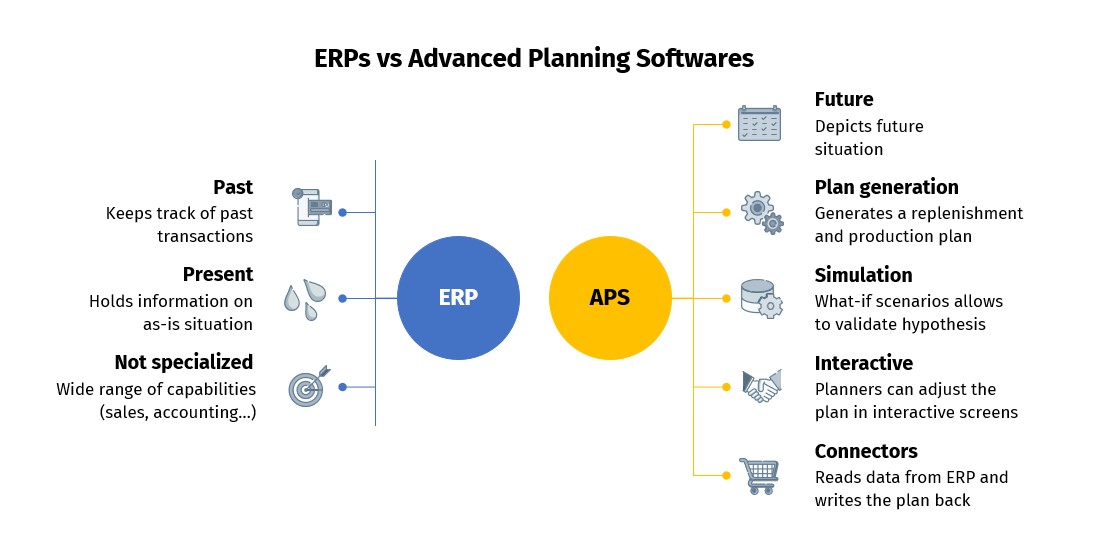Do you need a planning tool next to Odoo, SAP or MS Dynamics ?
Odoo, SAP, Microsoft Dynamics, … and all other ERP systems have a transaction oriented view on your company. Planning processes are more oriented towards decision support and don’t align well with this transactional view.
Many ERP vendors claim they have integrated planning capabilities. But why are so many of their customers using Excel spreadsheets or a dedicated planning tool in parallel with the ERP ? Is your ERP really the right tool for your planning ?
There are fundamental differences between the ERP-world and your planning-processes that explain this gap.

ERPs have been designed to track all transactions in a company.
All purchases, sales, inventory, production, payments.. are meticulously tracked and recorded in an ERP system.
ERP focus on the current status of a company, plus the reporting on the historical performance.
Advanced planning software is designed to provide forward-looking insights, starting from the current actuals and the historical performance.
Because ERPs are focused on reporting-on-the-past and tracking-the-current, the forward-looking capabilities of an ERP are quite often limited to a basic MRP.
An MRP-run fits the transactional nature of ERP systems.
APS software provides many tools to support the decision support workflows.
Every day planners are taking important decisions that require deep analysis and go far beyond the transactional world of an ERP.
Some examples:
- Evaluate different scenarios
- Decide on overtime or extra shifts
- Choose between making a product in-house or outsourcing the production
- Prioritize orders
- Analyze the impact of new sales, machine down-time, a late supplier, etc..
An MRP run provides an unconstrained propagation of the demand. It doesn’t reflect the complex demand and supply constraints a company is every day facing .
Advanced planning software cover all the requirements a planner would need in its daily workflow such as:
- Demand forecasting
- Inventory planning
- Production planning
- Available to promise
- Sales and operations planning
Each of these planning processes requires specific calculations, business logic, rules and constraints.
A classic argument of ERP vendors is that a single-platform, integrated solution is always better: all the company employees can see the same data in the same software.
A best-of-breed solution with dedicated software that supplements the ERP functionality in specialized domains easily outperforms a single-platform architecture.
Nowadays data integration technologies are mature, scalable and not rocket-science.
As a conclusion:
ERP software is complex. Planning software is complex.
They serve different business purposes that they can’t be mixed.